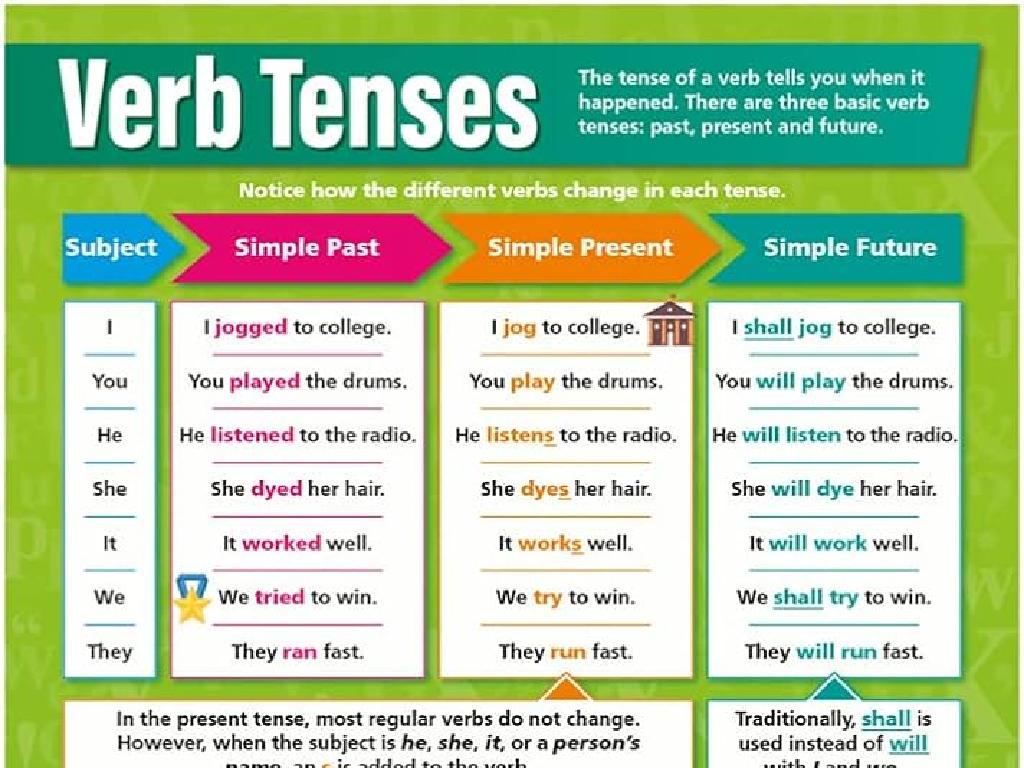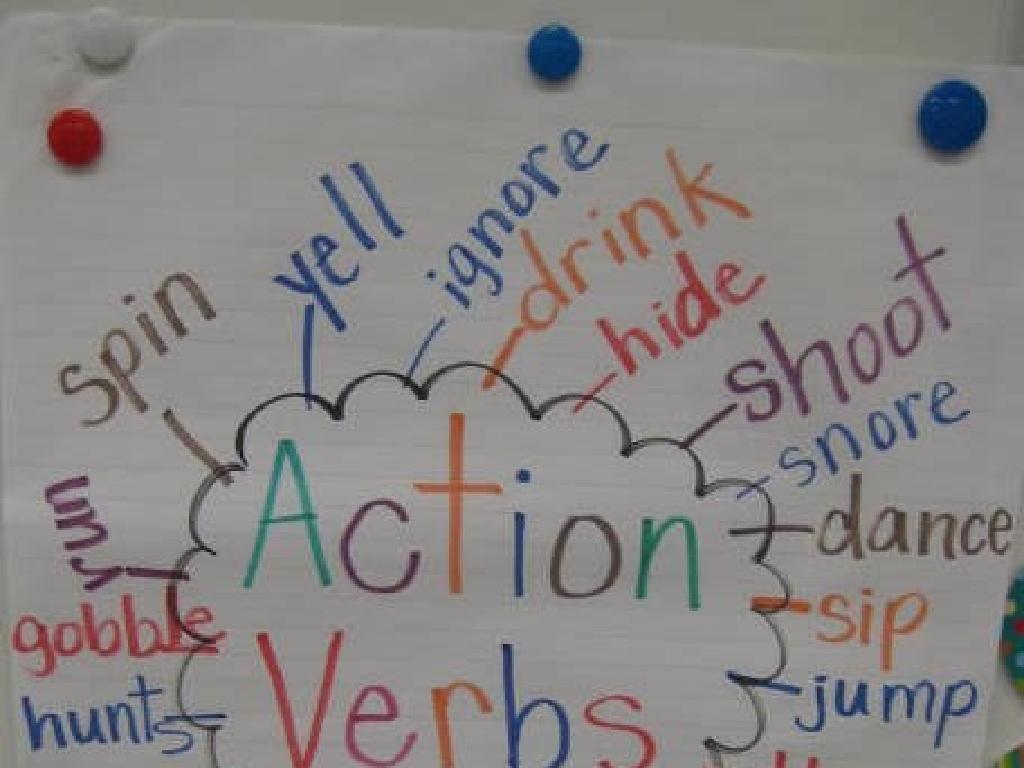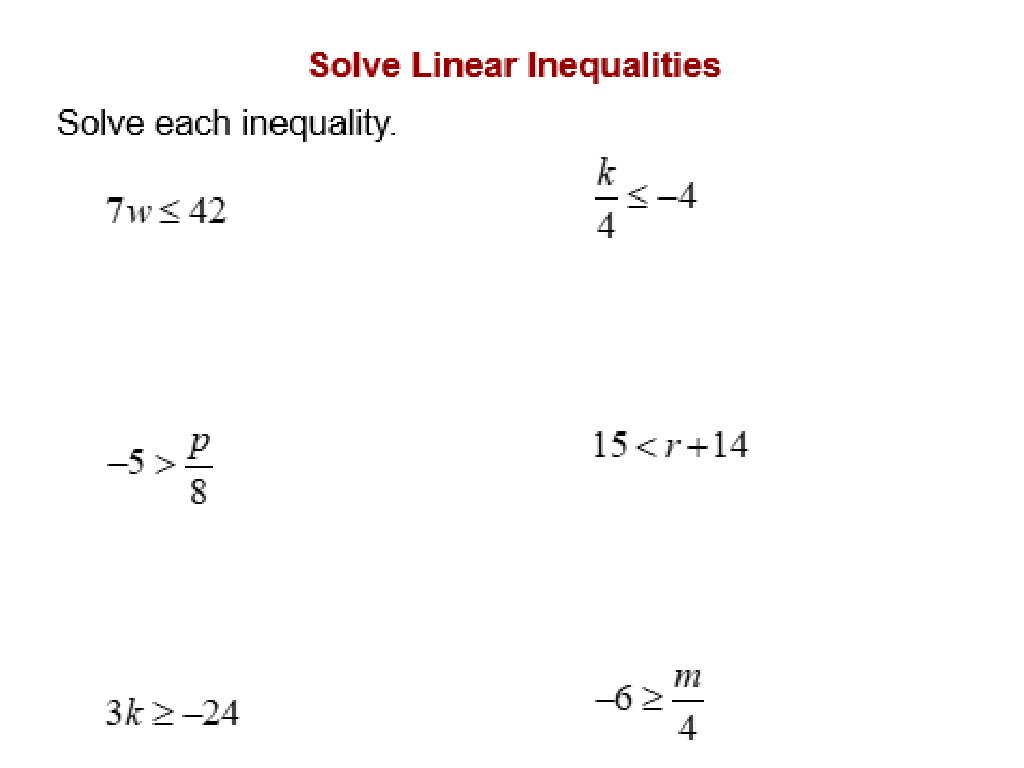Find Equivalent Fractions Using Fraction Strips
Subject: Math
Grade: Third grade
Topic: Equivalent Fractions
Please LOG IN to download the presentation. Access is available to registered users only.
View More Content
Welcome to Equivalent Fractions!
– What is a fraction?
– A fraction represents a part of a whole.
– Exploring equivalent fractions
– Fractions that represent the same value.
– Using fraction strips
– A hands-on tool to compare fractions.
– Today’s learning goal
– Find equivalent fractions with strips.
|
Begin the lesson by explaining the basic concept of a fraction as a part of a whole, using simple and relatable examples like a pizza cut into slices. Then, introduce the concept of equivalent fractions by showing that different fractions can represent the same portion of a whole. Use fraction strips as a visual and interactive method to help students understand and find equivalent fractions. The goal for today’s class is for students to become comfortable using fraction strips to identify fractions that are equivalent to each other. Encourage students to experiment with their fraction strips to find different fractions that are the same size, and to share their findings with the class.
Understanding Fractions
– A fraction shows part of a whole
– Numerator and denominator explained
– Top number (numerator) shows how many parts we have. Bottom number (denominator) shows how many equal parts the whole is divided into.
– Example: 1/2 as a fraction
– 1/2 means we have one part out of two equal parts of a whole.
– Using fraction strips for visuals
– Fraction strips are tools that help us see fractions more clearly.
|
Begin by explaining that a fraction represents a piece of something that is whole. Use real-life examples like a pizza cut into slices to illustrate this concept. Clarify the roles of the numerator and the denominator in a fraction. For instance, in 1/2, the numerator 1 indicates that we have one slice of pizza, and the denominator 2 tells us the pizza is cut into two slices. Show a visual example using fraction strips to help students understand how fractions represent equal parts of a whole. This will set the foundation for learning about equivalent fractions using fraction strips in subsequent slides.
Exploring Fraction Strips
– Fraction strips visualize fractions
– They are like fraction ‘pictures’
– Each strip is a divided whole
– Imagine a chocolate bar split into pieces
– Strips represent different fractions
– One strip might show 1/2, another 1/4
– Comparing strips finds equivalents
– Place strips together to see equal parts
|
This slide introduces fraction strips as a visual aid to help students understand and compare fractions. Each strip represents a whole item, like a chocolate bar, divided into equal parts. By comparing different strips, students can visually find equivalent fractions those that represent the same amount of the whole despite having different numerators and denominators. For example, two 1/4 strips are equivalent to one 1/2 strip. Encourage students to use fraction strips for hands-on practice to strengthen their grasp of equivalent fractions.
Understanding Equivalent Fractions
– What are equivalent fractions?
– Fractions that represent the same value
– Visualizing with fraction strips
– They occupy the same amount of space on a strip
– Example: 1/2 equals 2/4
– Both fractions cover the same length of the strip
|
This slide introduces the concept of equivalent fractions to third-grade students. Begin by explaining that even though equivalent fractions may have different numerators and denominators, they represent the same amount or part of a whole. Use fraction strips as a visual aid to show how different fractions can take up the same amount of space, reinforcing the concept of equivalence. For example, demonstrate that when you place a strip representing 1/2 next to a strip representing 2/4, they cover the same length, proving they are equivalent. Encourage students to think of other examples and use fraction strips to test their ideas. This hands-on activity will help solidify their understanding of equivalent fractions.
Finding Equivalent Fractions with Fraction Strips
– Compare sizes with fraction strips
– Line up strips to see which fractions are the same size.
– Fractions covering same length
– Look for different fractions that stretch across the same point on the whole strip.
– Different pieces, same size
– Even if the number of pieces isn’t the same, they can still represent the same amount.
– Understanding equivalence
|
This slide introduces students to the concept of equivalent fractions using fraction strips as a visual aid. By lining up fraction strips, students can visually compare the sizes of different fractions to determine if they are equivalent. It’s important to emphasize that even though the number of pieces may differ, the overall size can be the same, which is the essence of equivalent fractions. Encourage students to explore this concept by using fraction strips to match different fractions that make up the same length of a whole. This hands-on activity will help solidify their understanding of equivalence in fractions.
Let’s Practice Together: Equivalent Fractions
– Use fraction strips for 1/2
– Find two fractions equal to 1/2
– Like 2/4 or 4/8 are the same as 1/2
– Work with a partner
– Explain why they’re equivalent
– Use fraction strips to show equal sizes
|
This slide is for a class activity where students will actively engage with fraction strips to find and understand equivalent fractions. The goal is for them to visually grasp that different fractions can represent the same value. Students should work in pairs to encourage collaboration and discussion. As they find fractions equivalent to 1/2, such as 2/4 or 4/8, they should use their fraction strips to compare and confirm that the sizes are the same, thus proving equivalence. Teachers should circulate the room to assist and ask guiding questions. Possible activities include having different pairs find equivalence for other fractions, creating a wall chart of equivalent fractions discovered by the class, or using real-life objects to create fraction representations.
Class Activity: Making Fraction Strips
– Receive a set of blank fraction strips
– Color and cut out your strips
– Find equivalents to 3/4 with your strips
– Place strips together to see equal lengths
– Compare 3/4 and 4/8 using strips
– How do 3/4 and 4/8 strips match up?
|
In this hands-on activity, students will engage with the concept of equivalent fractions by creating their own fraction strips. Provide each student with a set of blank fraction strips. Guide them through coloring and cutting out the strips to create a personal set. Once completed, instruct students to use their strips to visually find fractions that are equivalent to 3/4, such as 6/8, by comparing lengths. Then, have them compare the strips for 3/4 and 4/8 to understand that they are the same length, thus equivalent. This activity will help solidify their understanding of equivalent fractions in a tangible way. Possible variations for different students could include finding equivalents to 1/2, 2/3, or 5/8, or even creating a wall display with their findings.
Sharing Our Fraction Discoveries
– Present your equivalent fractions
– Explain using fraction strips
– Show how fractions with different numbers can be the same size
– Discuss observations
– Did some fractions match unexpectedly?
– Share any questions
– Curiosity is great! What puzzled you?
|
This slide is for students to share their findings on equivalent fractions using fraction strips. Each student will present the equivalent fractions they’ve identified, explaining the process of how they used fraction strips to determine equivalency. Encourage them to discuss any patterns or surprises they noticed during the activity. It’s also an opportunity for students to ask questions and satisfy their curiosity about fractions. For the teacher: prepare to facilitate the discussion, ensuring each student has a chance to present and engage with the class. Offer guidance and clarification as needed, and use this as an opportunity to assess understanding and correct any misconceptions.
Homework: Exploring Equivalent Fractions
– Take home your fraction worksheet
– Use fraction strips for equivalence
– Fraction strips are visual tools that help compare sizes
– Find equivalent fractions
– Look for fractions that take up the same space on the strip
– Bring completed sheet to class
|
This homework assignment is designed to reinforce the concept of equivalent fractions using a hands-on approach with fraction strips. Students are expected to use the fraction strips to visually compare and determine which fractions represent the same value. Encourage them to line up the strips and see which fractions cover the same length. Remind them that equivalent fractions are different fractions that represent the same part of a whole. The completed worksheet will serve as a discussion point in the next class, allowing students to review their findings and solidify their understanding of equivalent fractions.
Conclusion: Mastering Equivalent Fractions
– Reviewing equivalent fractions
– Fractions with different numbers but the same value
– Using fraction strips effectively
– Line up strips to see equal parts
– Practice makes perfect
– Keep learning at home
– Use your strips to explore more fractions
|
As we wrap up today’s lesson on equivalent fractions, it’s important to revisit the key concept that fractions can look different but represent the same amount. Remind students how fraction strips are a hands-on tool to visually compare and find equivalent fractions. Encourage them to continue practicing at home by lining up their fraction strips to discover new equivalent pairs. Reinforce the idea that regular practice can greatly improve their understanding of fractions. For homework, ask students to use their fraction strips to find at least three sets of equivalent fractions and bring their examples to the next class for discussion.






